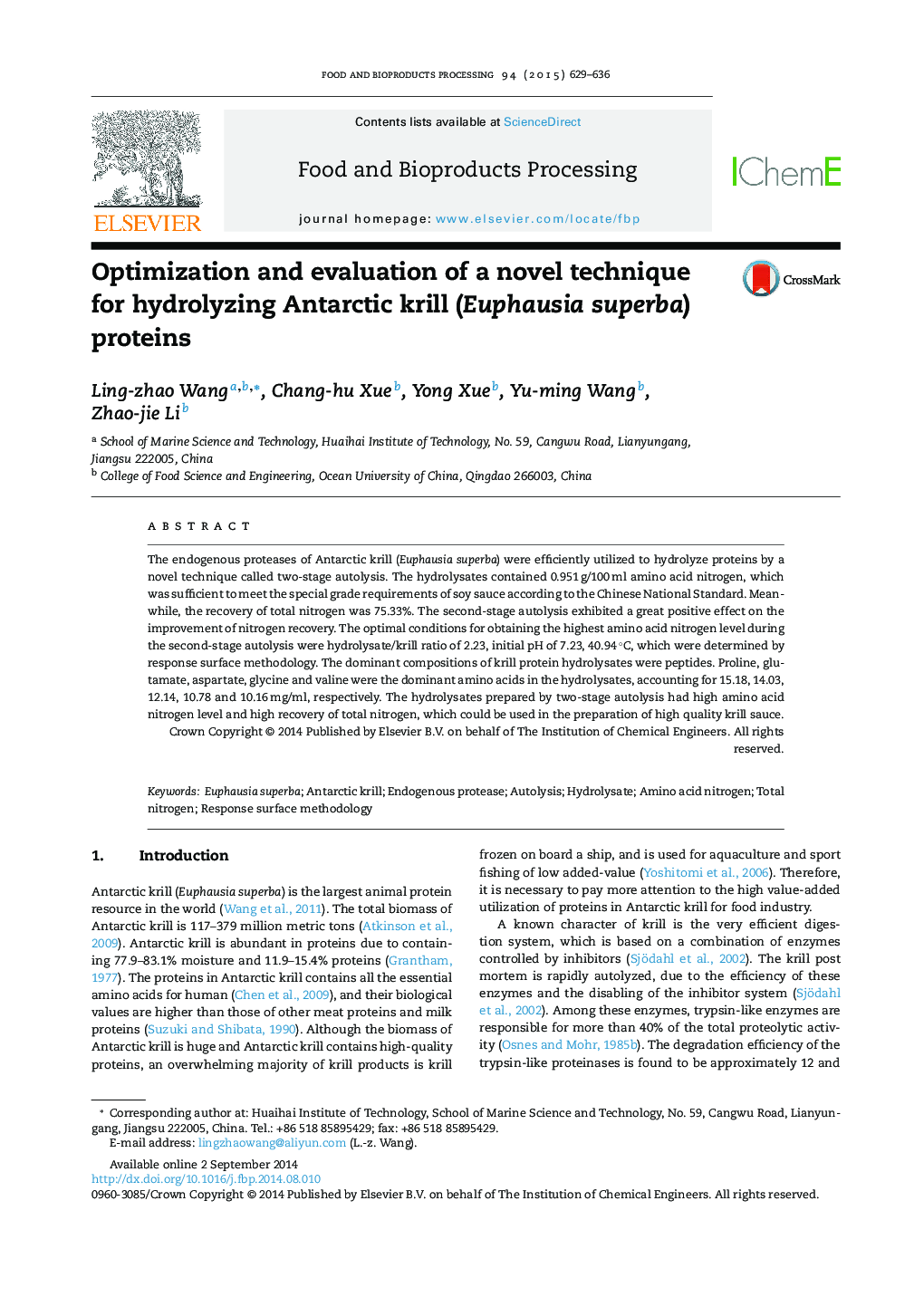| Article ID | Journal | Published Year | Pages | File Type |
|---|---|---|---|---|
| 18958 | Food and Bioproducts Processing | 2015 | 8 Pages |
The endogenous proteases of Antarctic krill (Euphausia superba) were efficiently utilized to hydrolyze proteins by a novel technique called two-stage autolysis. The hydrolysates contained 0.951 g/100 ml amino acid nitrogen, which was sufficient to meet the special grade requirements of soy sauce according to the Chinese National Standard. Meanwhile, the recovery of total nitrogen was 75.33%. The second-stage autolysis exhibited a great positive effect on the improvement of nitrogen recovery. The optimal conditions for obtaining the highest amino acid nitrogen level during the second-stage autolysis were hydrolysate/krill ratio of 2.23, initial pH of 7.23, 40.94 °C, which were determined by response surface methodology. The dominant compositions of krill protein hydrolysates were peptides. Proline, glutamate, aspartate, glycine and valine were the dominant amino acids in the hydrolysates, accounting for 15.18, 14.03, 12.14, 10.78 and 10.16 mg/ml, respectively. The hydrolysates prepared by two-stage autolysis had high amino acid nitrogen level and high recovery of total nitrogen, which could be used in the preparation of high quality krill sauce.
